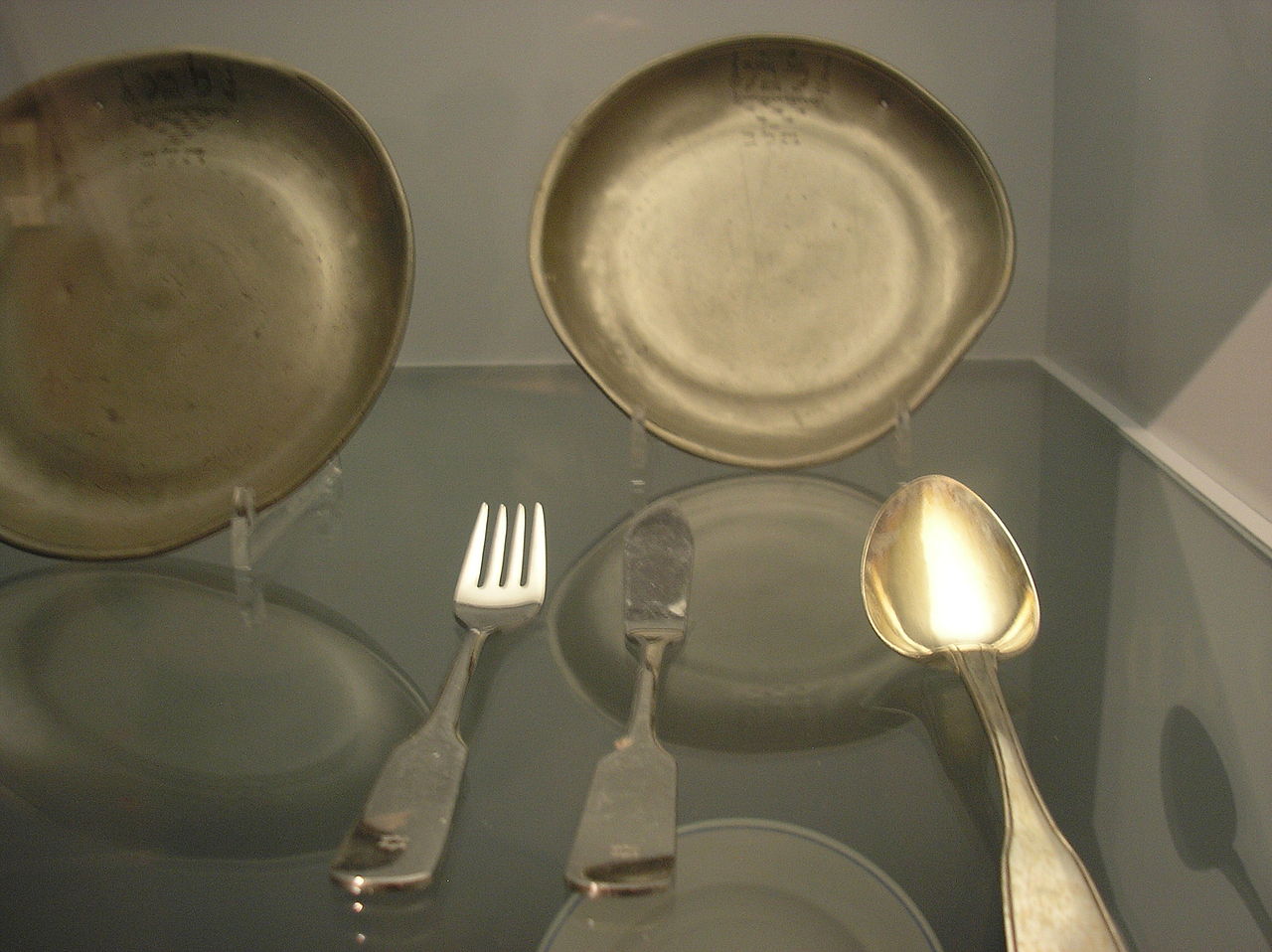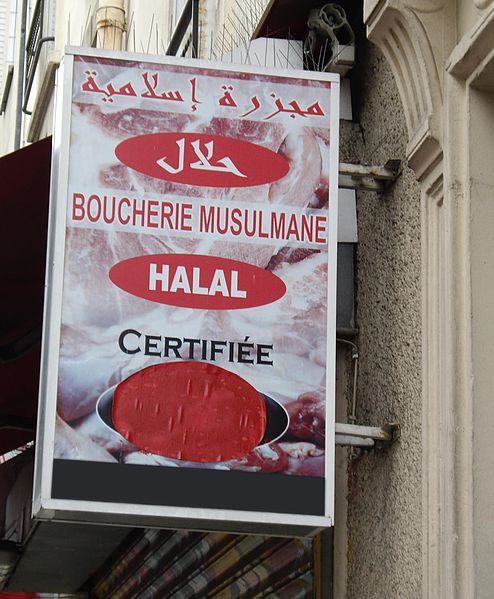3. Food and religious pluralism
Regardless to the process of secularization, our societies are much more multi-religious, plural and complex than before. The contemporary religious pluralism has given rise to a widespread debate on different research topics: one of these is represented by the relations between food and religion.
Every cultural group develops its own preferences for certain kinds of food and ways of preparing it. Cultural preferences stem from interplays between food supplies, tradition and necessities imposed by the social environment; however, food rules are also dictated by sacred stories (myths) and taboos concerning food practices. So, food is nevermore a physiological need but definitely a cultural need. Consequently, religious plurality in a society means coexistence of different dietary laws, prohibition rules and sometimes intercultural and political conflicts.
Every cultural and religious group acts as a culture carrier, in this respect every cultural and religious community is actively involved in the social inclusion process. The meanings embedded in cultural symbols, such as food, can serve to represent and institutionalize the values and beliefs of a broader culture. Therefore, food behaviours are influenced by both socio-economical and socio-cultural factors as much as religious conceptions, covering a fundamental role through the definition of rules and prohibitions. For all of these reasons, it is understandable that the religious significance of food has always captured the interest of anthropologists, historians and sociologist.
Kosher dairy dishes from the 19th century in the Jewish Museum, Berlin.

Many religious communities have rules concerning food separating what is pure and licit for human consumption and what is religiously impure and forbidden. Sometimes, religious proscriptions are combined with cultural disgusts so much that it is difficult to distinguish what is a religious rule and what is a cultural habit. In Europe, it is in Judaism and Islam that sets of religious rules are the most widespread and the most socially discussed. In Judaism, the set of religious dietary laws is termed kashrut and food that may be consumed according to halakha (Jewish law) is termed kosher in English, from a Hebrew word kashér (כָּשֵׁר), meaning "fit" (in this context, fit for consumption). In Islam, food that may be consumed according to the shariah (Islamic law) is termed halal (“licit”) and is opposed to haram (“illicit”). Other religions have some dietary laws (for example, Hinduism does not allow cow consumption) but these rules have a lesser impact on the social and political level. In several European countries, public criticism is focused on halal food, especially when served at school and this criticism comes from populist parties but also from secular groups. So, the production and distribution of halal meat, like France, is a delicate issue, surely for its islamophobic connections, but not only; ethical and philosophical animal rights groups are in opposition too. Also, some halal-labelled products are not recognized as halal by some members of Muslim communities. The Ministry of Food, Agriculture and Fisheries, regarding the difficulties to quantify and identify on the retail market the meat slaughtered according to religious rituals, reminds that ovine and goats ritually slaughtered represent 48% of the total number of ovine and goats slaughtered in France, while the adult cattle ritually slaughtered represent 11% of the total, 13% in the case of calves.
"Kosher dishes P7160076" by Deror avi - Own work.
created: 17 July 2007
Licensed under Attribution via Wikimedia Commons - https://commons.wikimedia.org/wiki/File:Kosher_dishes_P7160076.JPG#/media/File:Kosher_dishes_P7160076.JPG
Shop sign in French and Arabic for a halal butcher's shop in Paris

created: 20 March 2010
CC BY-SA 3.0
https://fr.wikipedia.org/wiki/.:Halal_shop_sign,_Rue_de_Patay,_Paris_13.jpg
Many religious communities have rules concerning food separating what is pure and licit for human consumption and what is religiously impure and forbidden. Sometimes, religious proscriptions are combined with cultural disgusts so much that it is difficult to distinguish what is a religious rule and what is a cultural habit. In Europe, it is in Judaism and Islam that sets of religious rules are the most widespread and the most socially discussed. In Judaism, the set of religious dietary laws is termed kashrut and food that may be consumed according to halakha (Jewish law) is termed kosher in English, from a Hebrew word kashér (כָּשֵׁר), meaning "fit" (in this context, fit for consumption). In Islam, food that may be consumed according to the shariah (Islamic law) is termed halal (“licit”) and is opposed to haram (“illicit”). Other religions have some dietary laws (for example, Hinduism does not allow cow consumption) but these rules have a lesser impact on the social and political level.
In several European countries, public criticism is focused on halal food, especially when served at school and this criticism comes from populist parties but also from secular groups. So, the production and distribution of halal meat, like France, is a delicate issue, surely for its islamophobic connections, but not only; ethical and philosophical animal rights groups are in opposition too. Also, some halal-labelled products are not recognized as halal by some members of Muslim communities. The Ministry of Food, Agriculture and Fisheries, regarding the difficulties to quantify and identify on the retail market the meat slaughtered according to religious rituals, reminds that ovine and goats ritually slaughtered represent 48% of the total number of ovine and goats slaughtered in France, while the adult cattle ritually slaughtered represent 11% of the total, 13% in the case of calves.
Hospital uses only halal beef (Denmark)
Hvidovre Hospital has introduced halal meat to its menu for the sake of Muslim patients. The hospital’s decision to serve only halal-slaughtered beef to all of its patients is being met with criticism.“We have freedom of religion in Denmark,” said Mehmet Ümit Necef, an integration expert and associate professor at the University of Southern Denmark. “This policy implies that one's religious beliefs should be prioritised.”Hvidovre Hospital's vice president, Torben Mogensen, said it is impossible for the hospital to use both kinds of beef and that they have received no complaints from patients.
by Ekstra Bladet
The Copenhagen Post
22 June 2013
http://cphpost.dk/news14/news-news14/hospital-uses-only-halal-beef.html
Many religious communities have rules concerning food separating what is pure and licit for human consumption and what is religiously impure and forbidden. Sometimes, religious proscriptions are combined with cultural disgusts so much that it is difficult to distinguish what is a religious rule and what is a cultural habit. In Europe, it is in Judaism and Islam that sets of religious rules are the most widespread and the most socially discussed. In Judaism, the set of religious dietary laws is termed kashrut and food that may be consumed according to halakha (Jewish law) is termed kosher in English, from a Hebrew word kashér (כָּשֵׁר), meaning "fit" (in this context, fit for consumption). In Islam, food that may be consumed according to the shariah (Islamic law) is termed halal (“licit”) and is opposed to haram (“illicit”). Other religions have some dietary laws (for example, Hinduism does not allow cow consumption) but these rules have a lesser impact on the social and political level.
In several European countries, public criticism is focused on halal food, especially when served at school and this criticism comes from populist parties but also from secular groups. So, the production and distribution of halal meat, like France, is a delicate issue, surely for its islamophobic connections, but not only; ethical and philosophical animal rights groups are in opposition too. Also, some halal-labelled products are not recognized as halal by some members of Muslim communities. The Ministry of Food, Agriculture and Fisheries, regarding the difficulties to quantify and identify on the retail market the meat slaughtered according to religious rituals, reminds that ovine and goats ritually slaughtered represent 48% of the total number of ovine and goats slaughtered in France, while the adult cattle ritually slaughtered represent 11% of the total, 13% in the case of calves.






